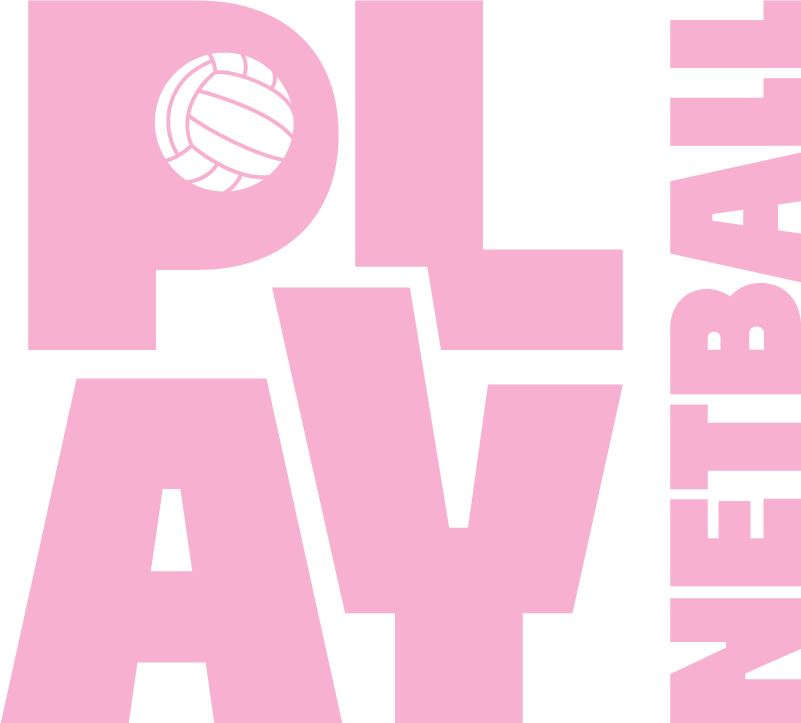Rules and regulations
Team Positions
A netball team consists of 7 players, all different positions. Only 7 players from the team can be on the court at one time. Within our rules and regulations, teams can play with 6 or 5 players if short but any less the team would need to forfeit their game.
All positions have designated areas on court:

GS
Main role is to shoot goals, and working closely with goal attack. The GS can only shoot in the shooting circle. GS can only move around in the attacking third including the shooting circle.

GA
Shares the shooting responsibilities with GS. GA can only shoot in the shooting circle but can play in the attacking third and centre third of the court.

WA
Main role is to help move the ball down to the attacking third and feed to the shooters. WA can move around in the attacking and centre third but is not allowed inside the shooting circle.

C
An attacking and defensive role, C requires a high level of fitness to help move the ball up and down the entire court. C can play in all thirds of the court excluding the shooting circles.

WD
A defensive role with the aim to block and intercept the attacking players from feeding the ball down to the shooting circle. WD can play in the centre and defensive third but not the opponent’s shooting circle.

GD
Assists the GK by stopping the opponent’s shooters from scoring. GD can play in the centre and defensive third as well as the opponent’s shooting circle.

GK
Often the last player to stop the opposing shooters from scoring. Also responsible for taking any throw-ins in the defensive third. GK can only play in the defensive third and opponent’s shooting circle.
Rules and Regulations of the game
Centre Pass
The first centre pass is decided by the two team captains, usually through a coin toss. Before the umpire blows their whistle, all players must start in their goal thirds except the two Centres. The Centre will then start the game by placing one foot in the centre circle and passing the ball to one their players. Players must receive the ball from the Centre in the centre third of the court only. Failure to pass in the centre third results in a free pass given to the opposing team.
Footwork
Players cannot move with the ball. To prevent being called for footwork, the player who receives the ball can either land by planting both feet on the ground and selecting one foot to be their leading foot – this foot you can pivot but the other must stay planted until the ball is released. Players can also receive the ball by landing with one foot at a time, the first foot you land on is the foot you cannot move but can pivot with the other foot.
Offside
All players, whether they have the ball or not, cannot move into an area of the court which their position is not allowed to enter. If any players do go offside, the umpire will blow their whistle and the opposing team receive a free pass. The Umpire will explain the netball rules and regulations to players if they don’t understand.
Held Ball
The umpire will call held ball if a player has possession of the ball longer than 3 seconds. When this happens the opposing team will be given a free pass.
Replayed Ball
This rule specifically means that if you lose control of the ball and pick it back up again, the umpire will call this a replayed ball and the opposing team receive a free pass. If a player taps or deflects the ball and then takes possession this would not be classed as replayed as the player did not have full control of the ball.
Obstruction
A player who is within 3 feet of an opponent, whether attacking or defending, may not use movements that take the arms away from the body so as to limit the possible movements of an opponent. If the opposition does not have the ball, the 3 feet rule does not apply but arms must still be kept by your side.
Contact and Contest
When attacking, defending or playing the ball, opposing players may come into physical contact with each other. Provided the players do not interfere with each other’s play or use their bodies to gain an unfair advantage over their opponent, it is deemed to be ‘contest’ and play continues. ‘Contact’ occurs when a player’s actions interfere with an opponent’s play whether these are accidental or deliberate.
Over a Third
The ball cannot be thrown over a complete third of the court without being touched or caught by a player (i.e. it cannot cross two transverse lines). If this happens, a free pass will be given to the opposing team.
Leaving the Court
If a player needs to leave the court, for whatever reason, can do so by calling time. The umpire will then let the player leave the court but cannot come back on until the next centre pass. Players must wait for the umpire to signal them to come back on court.
Taking a Free Pass or Penalty
If your team have been given a free pass you have three seconds from setting up the free pass to throwing the ball to a player. Failure to do so will result in the opposing team being given the free pass. If your free pass is off court, make sure your foot does not touch or go over the court line, if it does you will be called for foot fault and the pass will be given to the opposing team.
Foul Play
Foul Play is anything a player does within the field of play that is contrary to the letter and spirit of the rules of the game. An umpire will decide what level of sanction is required from within the game management spectrum of sanctions, cautions, warnings or suspensions.
Play Netball supports all of the umpires in its leagues and will not tolerate any disrespect shown towards an umpire either on or off the court.
Jewellery
Players must remove all jewellery before their game, jewellery cannot be taped unless it’s a wedding band. If you do not remove your jewellery you cannot play.
Nails
Nails must be short and smooth. As a guideline, nails should be no longer than 1mm long and should not be seen from the underside of the finger. This is to protect other players from injury. Nails will be checked by umpires before match play. If you’re told your nails are too long you will be asked to file them down, otherwise you cannot play.
All netball rules and regulations must be adhered to by all players and officials, ensuring fair play and enjoyment by all.


